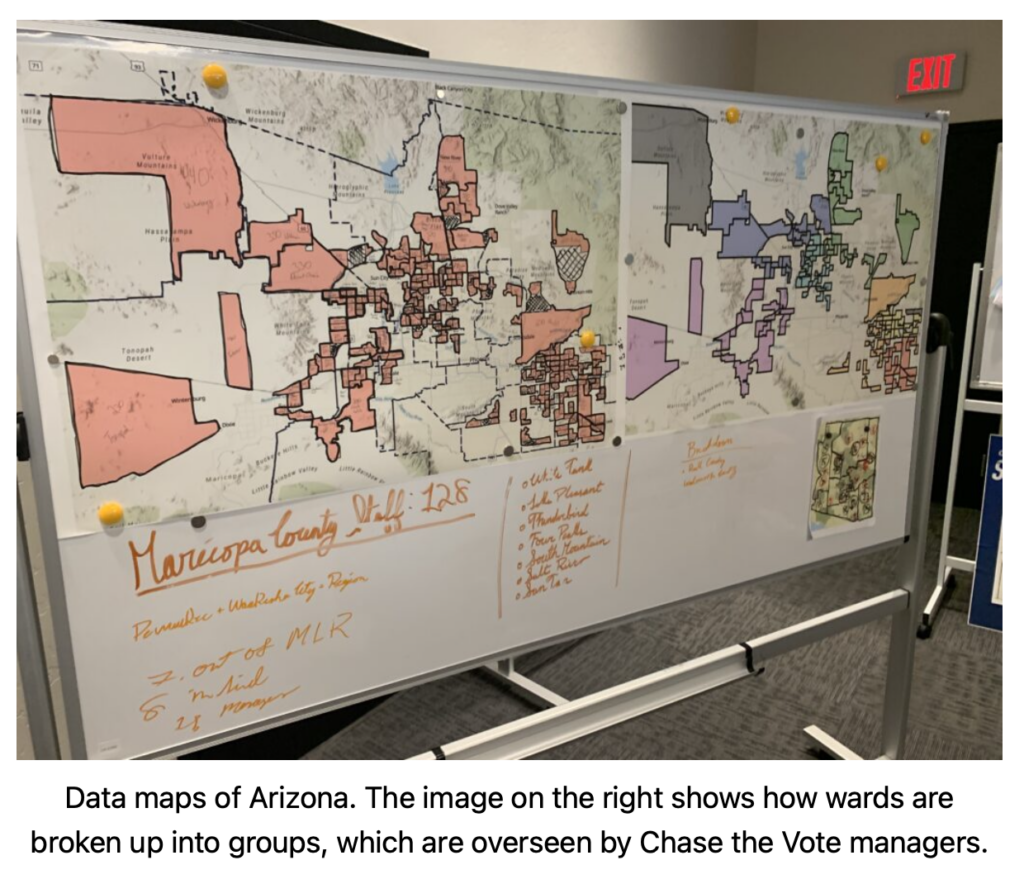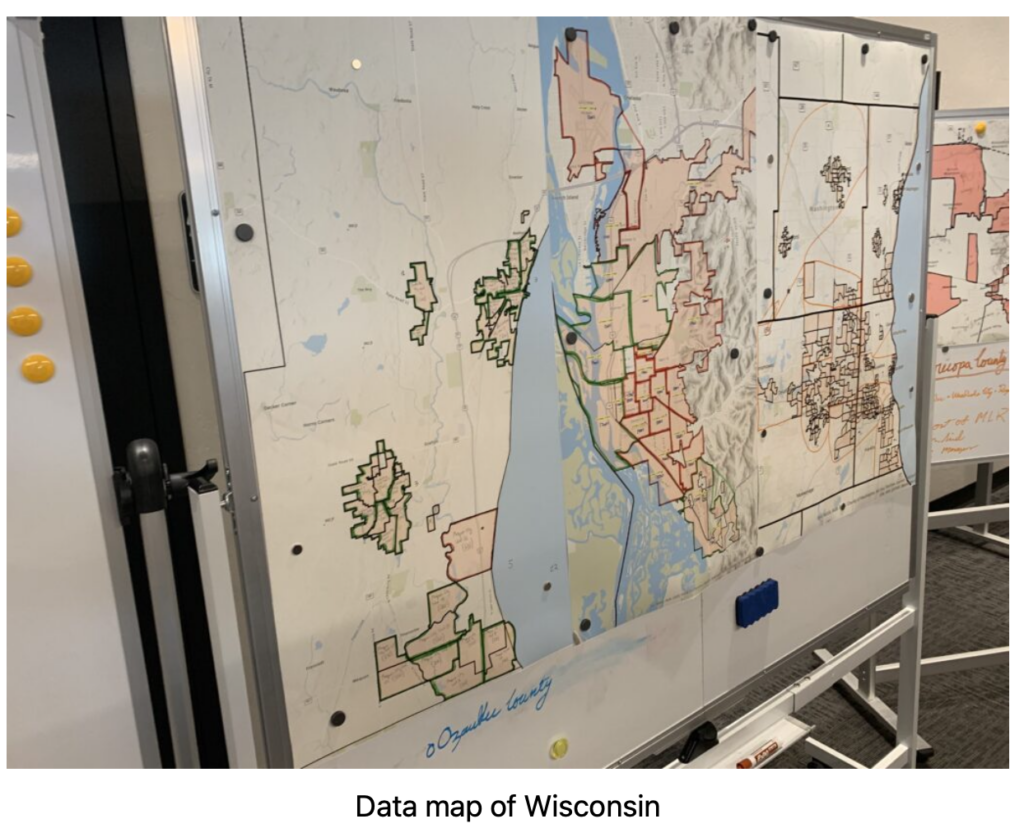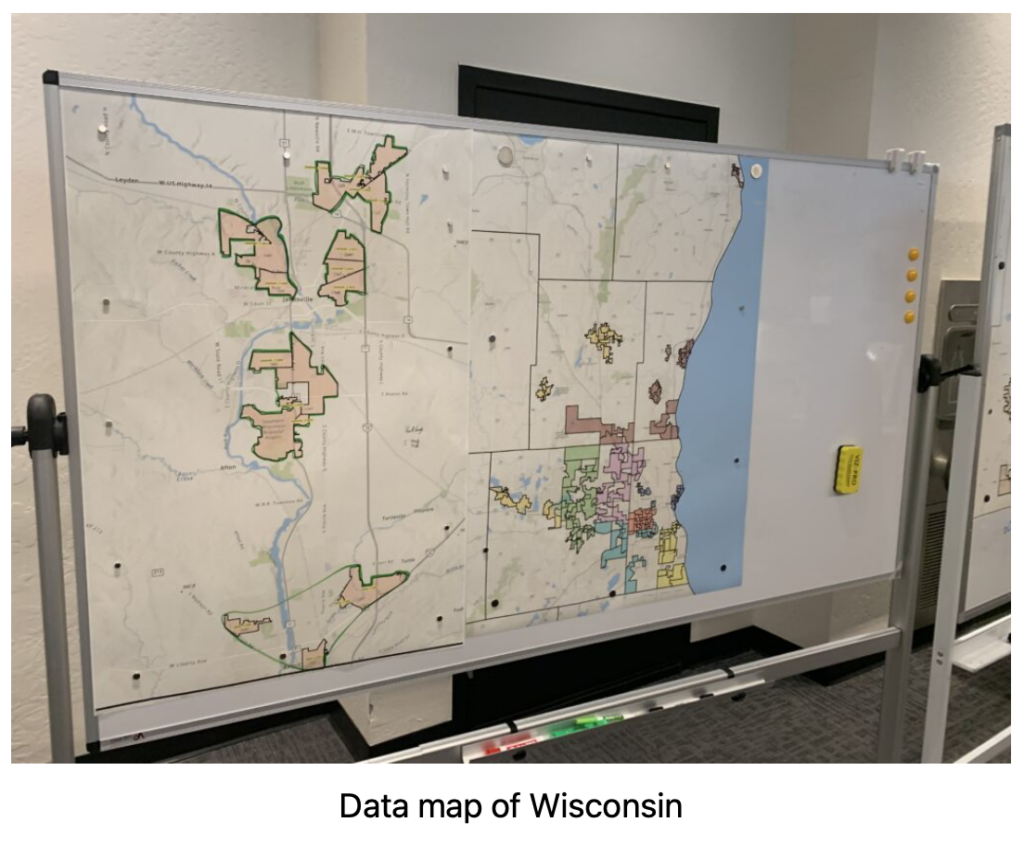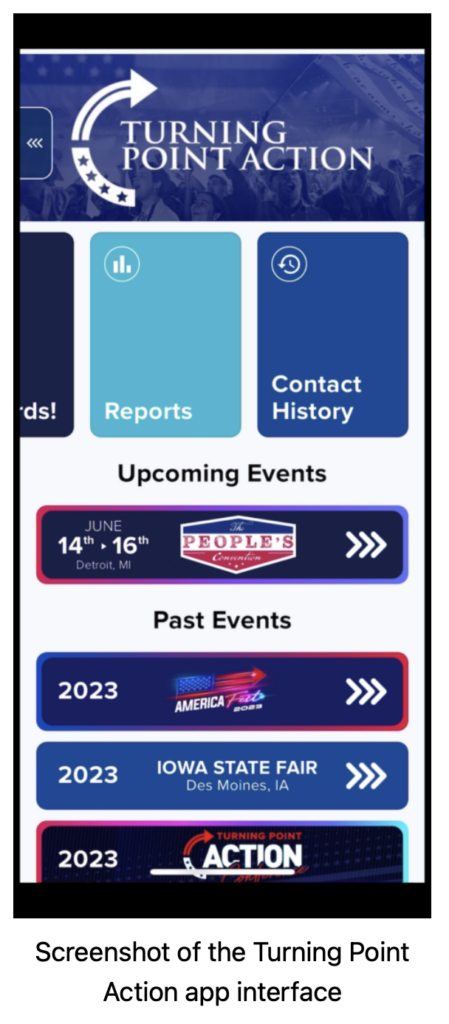Can Turning Point Action’s ‘Chase The Vote’ Offset Democrats’ Election Machine?
PHOENIX, Ariz. — It’s not lost on conservatives that Democrats have mastered the art of modern-day electioneering. Through the use of left-wing voter registration groups bankrolled by wealthy Democrat donors and highly sophisticated ballot chasing operations, Democrats have crafted a state-of-the-art machine designed to accrue their candidates an advantage over Republicans ahead of Election Day.
The GOP’s failure to mimic similar operations has contributed to numerous electoral defeats in the years since the 2020 election and the coincident expansion of mail-in voting — but one conservative group is hoping to change that trend.
Last week, Turning Point Action (TPA), the 501(c)(4) political advocacy arm of Turning Point USA, held its first series of trainings for hired activists to chase Republican-favorable ballots in the months leading up to the November elections. Known as “Chase the Vote,” the initiative seeks to offset Democrats’ strategy by identifying, engaging, and mobilizing primarily low-propensity GOP voters in Arizona, Wisconsin, and potentially Georgia.
“There are all these people who do not vote [and] who are on the early voter rolls,” Tyler Bowyer, Turning Point Action’s chief operation officer and Arizona’s RNC committeeman, told The Federalist. “We need to make sure that they vote, whether that’s early or in person.”
Training GOP Ballot Chasers
Part of TPA’s training is instructing chasers on how to engage with prospective GOP voters — and that means identifying the problems with the Republican Party’s current approach to voter outreach.
The general consensus among the roughly two dozen Arizona chasers who attended last week’s training was that the GOP’s methods are ineffective and impersonal. Attendees described them as “transactional” and opined that the party’s tactics regularly fail to connect with electors in ways that prompt them to vote.
At one point, Bowyer — who led the training — asked who among the trainees previously worked on a Republican outreach campaign and whether they were instructed by the party to follow-up with the list of voters they were given. Of the roughly half who said they worked on such a campaign, not a single trainee raised their hand when asked the latter question.

“Sometimes, [Republicans] might say they want to go door knocking but it’s usually just right before a voting period,” Arizona resident and Chase the Vote manager Julie Fisher told The Federalist. “It’s not such a focused effort to where we’re actually going out and engaging with [voters] on a consistent basis.”
TPA’s strategy departs from the traditional GOP voter outreach model by building relationships with prospective voters in the months leading up to election season. Bowyer instructed TPA’s new recruits on how to employ a community-based approach that involves forming personal ties with these potential voters and following up with them after initial contact.
Trainees are advised to make connections with low-propensity voters in more natural ways than just reading off a prepared script. This includes finding points of common interest and generating conversations based on general topics, such as family or an American flag displayed outside the voter’s house. The goal for chasers, according to Bowyer, is to avoid coming off as the election version of a car salesman or telemarketer.
Equally significant is that chasers are pursuing ballots in the communities in which they live, allowing them to use their knowledge of and connections within their neighborhoods to present a sense of authenticity and better connect with prospective GOP electors in their area. The ultimate goal is for chasers to form a relationship and establish trust with these low-propensity Republicans and encourage them to vote in upcoming primary and general elections.
How the Sausage is Made
So, if forming relationships with voters is such a big facet of TPA’s ballot chasing strategy, how do these chasers know which electors they’re supposed to target?
Using the most recent voter roll data acquired from local and state governments, Chase the Vote’s Matthew Martinez crafted hand-drawn maps “from scratch” that identify areas with significant amounts of low-propensity GOP voters. Each custom ward or precinct contains hundreds of these prospective electors. Neighboring territories are placed into groups, which will be overseen by Chase the Vote managers from those respective regions.

“Each of [these] territories are extremely unique,” Martinez told The Federalist. “We don’t want to draw a blanket across Arizona and expect that to cover everybody. The best way for us to organize is have it tailored to the exact circumstances of the people in the community of [these] territories. And that’s how we made the maps.”
TPA is also targeting newly registered GOP voters and independents, according to Martinez.

In addition to their huge funding advantage over Republicans, Democrat ballot chasing efforts are made easier by the fact that many of their voters are concentrated in densely-populated urban areas, while Republican voters are more likely to be found in exurbs and rural areas, where voters are more spread out. When pressed on how Chase the Vote’s strategy compensates for this geographic disadvantage, TPA Senior Director Austin Smith contended that in states like Arizona, there are “thousands” of low-propensity Republican voters living in closely condensed suburbs that the GOP has failed to reach and that this makes ballot chasing “just as easy for [Republicans, but] we just have never done it before.”
“Take Maricopa County for instance. It’s the fourth largest county in America but it’s also the largest population-wise in Arizona,” Smith said. “Just in the suburbs of Maricopa County … you’ve got … these communities [that] are actually all really close to each other, and there [are] thousands and thousands and thousands of Republican votes in these neighborhoods. So, it’s just as easy for us to go door to door and get Republican votes in the suburbs [as] it is for the Democrats when they kind of live on top of one another in the urban areas.”
Martinez claimed he and his team have identified 286,000 low-propensity Republican voters in Arizona and 542,000 in Wisconsin. He also noted that TPA’s initial goal is to have at least 600 ballot chasers — 300 in Arizona and 300 in Wisconsin — trained and deployed prior to the 2024 election, with Smith adding that TPA is aiming to have its first 135 Arizona chasers out of the nest by Memorial Day weekend.

New Tech and Data Collection
To streamline its ballot chasing initiative, TPA developed an app for chasers to download on their phones that allows them to access the comprehensive data analyzed and produced by Martinez and his team. The app provides chasers with a list of low-propensity voters in their area and includes information such as an elector’s name and address, and a map showing where he or she lives. It also identifies if the voter has a mail-in ballot or is a traditional early or Election Day voter, indicates whether the voter has cast his ballot in any given election, and will update daily with the latter information as it’s released by county governments.
The app’s mapping feature allows users to prioritize which targets to focus on leading up to the election by using icons that signify whether the low-propensity voter still has a ballot in his possession.

Chasers are expected to file weekly reports, which includes connecting their Gmail to Google’s Streak Pipeline software to track the status of low-propensity Republicans in their wards and precincts as they engage with them. In their reports, chasers describe their contacts with these voters and include any information learned about them. The status of these voters can be characterized as “uncontacted,” all the way to “cast ballot in general election.”
Chase the Vote will collect this data and use it to determine which low-propensity Republicans that chasers can and should focus on ahead of primary and general elections. Turning Point Action retains this data so it can be used to enhance its GOP voter outreach operations and data infrastructure for future elections.
This technology makes “it easy for people to go in and within minutes, observe and identify the voters that need to be contacted and then help chase their ballots when the time comes,” Bowyer said.
Bowyer further explained how national GOP groups such as the RNC have often relied on the same tech vendors over the past several election cycles and have failed to adapt to the changing electioneering landscape. He claimed that, as an RNC member, his questions about how much money the Republican Party has invested in new technologies have gone unanswered.
“I’ve served in every leadership position within the Republican Party: precinct committeeman, legislative district chair, county chairman, national committeeman from the state. It’s not like I’m like, some yahoo that came out of nowhere,” Bowyer said. “I’ve used these tools for years. And they suck. They don’t work. They don’t do what we need them to do in order to effectively and quickly chase ballots.”
Collaboration with Other Groups and Activists
The Turning Point Action app isn’t just available to its ballot chasers.
Bowyer noted how the application allows chasers to provide conservatives “they come into contact with a tool to be able to contact voters on their own,” and help ensure “more people in their community are contacting the targeted voters that we need to chase.” In fact, TPA plans to collaborate with other conservative organizations to help boost its voter outreach efforts, according to Smith and Turning Point spokesman Andrew Kolvet.
Kolvet emphasized that trained TPA chasers can easily show a fellow conservative “how to use the app” and work with them to expand GOP voter outreach efforts.
“Now you’ve got a paid staffer [who] knows how to use the app [and] how to train somebody to use the app,” Kolvet said. “Somebody who’s passionate can get the app, know who their targets are, and be coordinated with a local chaser in a territory where they know there’s 400 to 600 targets and get them” to vote.
Turning Point Action intends to coordinate with Tea Party Patriots Action, Moms For America, and several other groups on its Chase the Vote initiative. Martinez said TPA wants to involve state and local conservative organizations in the effort as well.
Potential Challenges
While deploying hires to chase ballots in the areas where they live remains a core component of Chase the Vote’s community-based activism, it could present a potential problem. Smith said that TPA has succeeded in hiring chasers in precincts with substantial amounts of low-propensity GOP voters but noted that doing so may become more difficult as the initiative grows.
“We’ve done a good job so far at finding people,” Smith said. “But I imagine as time goes on, it may get a little bit harder to find somebody that actually lives in that precinct or the precinct next door.”
There’s also the question of whether TPA will be able to amass enough resources to expand its Chase the Vote operations into Georgia in time for the 2024 contest. Kolvet said that the organization has expended “tens of millions of dollars” on building the infrastructure for the initiative, with funds having gone towards developing and troubleshooting the app, accumulating and finalizing voter data maps, and hiring ballot chasers. The group’s aspirational goal is to put $108 million towards Chase the Vote, according to Kolvet, who added that a determination on how that money will be spent will be made as it’s acquired.
“Is it going to be difficult? Are there going to be mistakes? [Are] there going to be technical glitches and problems along the way? Yeah, of course there’s going to be all those things. But we’ve come further than anyone ever has before on this subject matter,” Bowyer said. “If you’re smart about what you do, and you put … the right program together, you are going to have much more impact than just the ‘kitchen sink approach.’”
Shawn Fleetwood is a staff writer for The Federalist and a graduate of the University of Mary Washington. He previously served as a state content writer for Convention of States Action and his work has been featured in numerous outlets, including RealClearPolitics, RealClearHealth, and Conservative Review. Follow him on Twitter @ShawnFleetwood





Comments are closed.